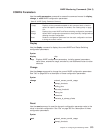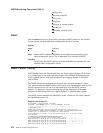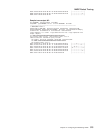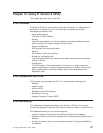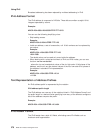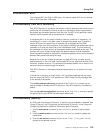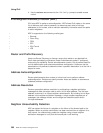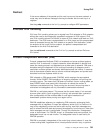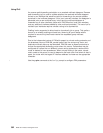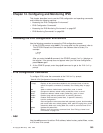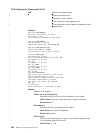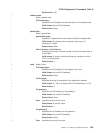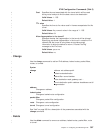
Redirect
If the source address of the packet and the next hop are on the same network, a
router may send a redirect message informing the sender that the next hop is a
neighbor.
Use the p ndp command at the Config> prompt to configure NDP parameters.
IPv6 over IPv4 Tunneling
IPv6 over IPv4 tunneling allows you to migrate from IPv4 networks to IPv6 networks
without the need to simultaneously upgrade all equipment to IPv6 support. IPv6
over IPv4 tunneling allows IPv6 frames to cross an IPv4 network and reach an IPv6
destination. The IPv6 frame is encapsulated in an IPv4 frame and this encapsulated
frame is forwarded through the IPv4 network to a specific IPv4 destination, called
the endpoint of the tunnel. At this endpoint, the packet is decapsulated and
forwarded to the final IPv6 destination.
Use the add tunnel command at the IPv6 Config> prompt to add an IPv6 over
IPv4 tunnel.
Protocol Independent Multicast (PIM)
Protocol Independent Multicast (PIM) is a broadcast and prune multicast protocol
used by IPv6. It works well in campus networks, where bandwidth is plentiful and
users are closely grouped, not dispersed over a wide area of networks. PIM uses a
broadcast and prune approach for the multicast forwarding of datagrams and is
used when multicast groups are densely distributed across the internet. It assumes
that all downstream systems want to receive multicast datagrams and prunes back
branches from those systems which do not.
PIM is based on PIM sparse-mode (PIM-SM), which employs the same packet
formats. Unlike DVMRP, PIM forwards on all outgoing interfaces until pruning and
truncating occurs. This means that PIM does not maintain its own routing tables, as
does DVMRP which uses parent-child information to reduce the number of
interfaces used before pruning. Once pruning has occurred, the pruning state is
maintained and datagrams are only forwarded to downstream members
PIM-DM is a soft state protocol. This means that the prune states, if not removed
by some other activity (such as grafting or joining), are removed after a period of
time (configurable) and the multicast data is once again broadcast to all
downstream systems where pruning once again occurs.
PIM-DM establishes adjacency to neighboring PIM routers by exchanging Hello
messages with all neighbors. It keeps the adjacency active until it is timed out. As
long as the neighboring routers are active and running, new Hello messages are
sent to refresh the Hello state and prevent the adjacency from timing out. How often
Hello messages are sent is configurable. Through this mechanism, a designated
router is also chosen. For PIM-DM, since it is a broadcast and prune protocol, the
designated router has no real function. The designated router is used mainly for
PIM-SM operation.
PIM-DM is completely independent of the under-lying unicast protocol. It uses the
unicast routing table, regardless which unicast protocol owns an entry, to perform
Using IPv6
Chapter 13. Using IP Version 6 (IPv6) 381



